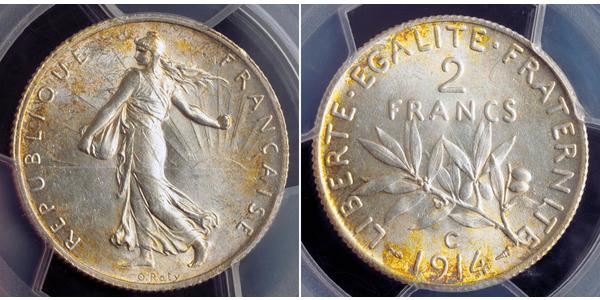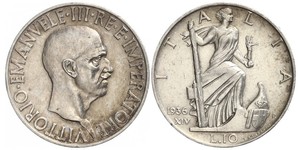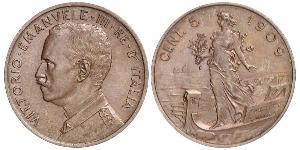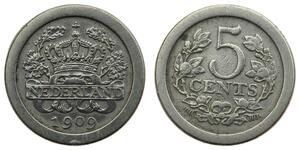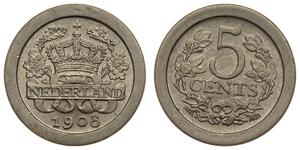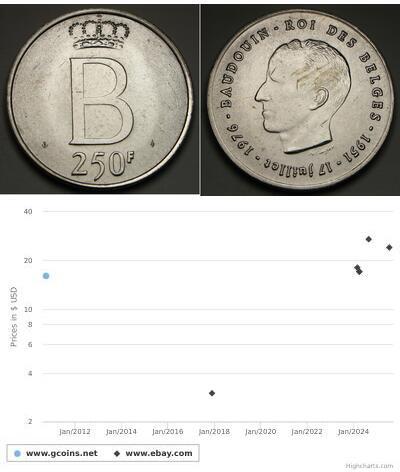1914-C, France (4th Republic). Silver 2 Francs Coin. Castelsarrasin! PCGS MS-62!
Mint Years: 1914 Mint Place: Castelsarrasin (C) Denomination: 2 Francs ("the Sower") Reference. KM-845.2 ($110 in UNC!) Condition: Certified nad graded by PCGS as MS-62! Mintage: 462,000 pcs. (1-year type, with a low mintage, compared to the Paris mint issue of over 5 millions for this date!) Material: Silver (.835) Diameter: 27mm Weight: 10gm
Obverse: Female togate personification of the French Republic (Francia) left, sowing seed. Sun rising in backround. Legend: REPUBLIQUE FRANCAISE . Reverse: Denomination (2 FRANCS) above olive-wreath. Mint initial (C) of the Castelsarrasin mint below. Legend: LIBERTE . EGALITE . FRATERNITE (privy mark: cornucopia) 1914 (privy mark: torch) / C
Castelsarrasin (French pronunciation: [kastɛlsaʁazɛ̃]; Occitan: los Sarrasins) is a commune in the Tarn-et-Garonne department in Occitanie region of France. The inhabitants are called Castelsarrasinois. It is the second most populous commune in Tarn-et-Garonne after Montauban. The first certain evidence of the town dates from 961. The name, Castel Sarracenum, would indicate that the castle was built in the Saracen era. The early history of the city is marked by wars; against the English until the end of the 12th century, then the Albigensian Crusade during the first part of the 13th century, and then the Shepherd's Crusade of 1320 that resulted in the deaths of many Jews in the city. The region was much affected by the Hundred Years' War, and again, during the wars of religion of the 16th century, the city's largely Catholic population was in frequent conflict with the generally Protestant surrounding region. The region is calmer during the following centuries, up to the time of the French Revolution.
Bid with confiedence!
The French Fourth Republic was the republican government of France between 1946 and 1958, governed by the fourth republican constitution. It was in many ways a revival of the Third Republic, which was in place before World War II, and suffered many of the same problems. France adopted the constitution of the Fourth Republic on 13 October 1946.
The Fourth Republic saw an era of great economic growth in France and the rebuilding of the nation's social institutions and industry after the war, and played an important part in the development of the process of European integration which changed the continent permanently. Some attempts were made to strengthen the executive branch of government to prevent the unstable situation that had existed before the war, but the instability remained and the Fourth Republic saw frequent changes in government - there were 20 governments in ten years. Additionally, the government proved unable to make effective decisions regarding decolonization. As a result, the Fourth Republic collapsed and what some critics considered to be a de facto coup d'état, subsequently legitimized by a referendum on 5 October 1958, led to the establishment of the Fifth Republic in 1959.

|
Posted by:
anonymous 2019-03-12 |
5 Cent Netherlands
group has 11 coins / 8 prices
⇑

